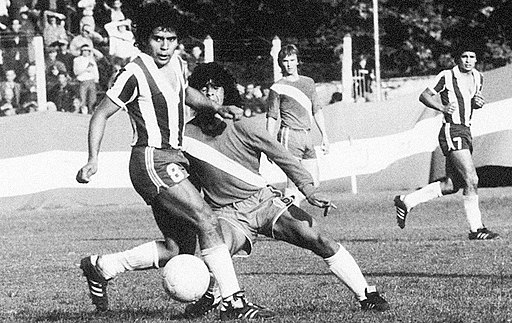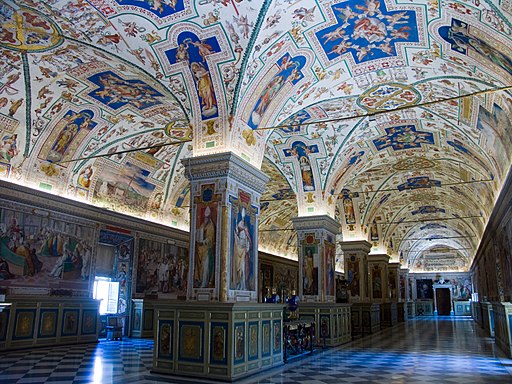Diego Maradona: Bad Boy and Footballing Genius
LEVEL
Humanities(HU 1102)
THEME
History
Diego Maradona
Bad Boy and Footballing Genius
Diego Maradona has been a cocaine user and an alcoholic. He has had more than one fight on the football field, even once in front of the King of Spain when the monarch was watching a match. Then again, he has suffered many injuries and illnesses, including weight issues which affected his play. Once, he fired a gun at TV and newspaper reporters who, he said, were invading his privacy. Maradona also still owes millions in unpaid tax. Most importantly for his home life, when he got divorced from his wife in 2004, he finally admitted that he had an illegitimate son after years of denying it. In short, the football legend has led a life that might be common for a rock star but is unusual for a sportsman.

Yet, despite all these personal problems which might have seen him in prison, Diego Maradona is still seen as the best footballer of the 1900s, according to the FIFA Player of the Century Awards. He has taken part in four World Cup tournaments, winning in 1986 when he was captain of the Argentina team. In the 1980s, he also set records for the highest transfer fee ever, not once but twice. So, although Pelé scored more goals and Messi won more trophies, Maradona remains the most-admired footballer of all time.
But where did
this football legend come from? He was born in Argentina in October, 1960, the
fourth child but first son of poor parents. Throughout his life, he kept in
close contact with both his mother and father. In 1990, he actually showed his
monthly phone bills to an interviewer, detailing $15,000 of calls to his
parents, brothers and sisters in just thirty days. When he got the sad news
that his mother was in critical condition in 2011, Maradona was in Dubai
and rushed home to Argentina. Tragically, by the time he reached his native
land, his mother was already dead.

Maradona
was first spotted
by a talent
scout when he was only eight. He was picked for the Argentinos
Juniors, a Buenos Aires team and, by the age of twelve, was hired to impress spectators
at First Division matches with his footwork. Ten days before his sixteenth
birthday, he played his first match for Argentinos Juniors, scoring his first
goal for the team just a couple of weeks after turning 16. He was the youngest
player ever in Argentina’s premier league. Maradona stayed with the club for
five years, scoring 116 goals in 165 matches.
In 1982, Maradona
was transferred to Barcelona for an all-time record fee of $5 million. Yet, the
time he spent there was unhappy: he became very ill with hepatitis and also
broke his ankle in a match, sidelining him for three long months. There were
rumours that he would never play again, but the young man overcame his injury
and returned to the first team. His time at the club came to a sudden end at
the end of his second season there though when he began a fight with a player
who had abused
and fouled him, which spread to other members of both teams and the spectators.
King Juan Carlos was in the crowd, which seemed to make the violence all the
more disrespectful
and serious. It was clear that Maradona could not remain at Barcelona. He was
transferred to Napoli, an Italian team, again for a record fee.
The
arrival of the young Argentinian changed the face of Italian football, which,
until that time, was dominated by teams from the north of the country. Maradona
soon showed his fans that those were days of the past. During his seven-year
stay at Napoli, Maradona captained the side to many new achievements, including
the League Championships, the Coppa Italia, the UEFA Cup and the Italian
Supercup, scoring more goals than any other Napoli player had ever managed
before.
Given his
great successes at Napoli, it is perhaps ironic that this was the period when Maradona’s
cocaine usage started seriously to interfere with his play. He often did not turn up
for practice and missed matches. In 1992, he was sacked by Napoli after he was banned
from football for fifteen months for testing positive for cocaine.
On the
international stage, Maradona represented Argentina four times between 1982 and
1994, winning the greatest prize, the World Cup, in 1986. Although Argentina
beat West Germany 3 - 2 in the final, it is the quarter final match against
England which most people remember. Maradona scored two goals: the second one
is often regarded
as the best ever scored in any World Cup match. The first should
actually have been a handball foul, as the ball made contact with Maradona’s
hand – not his head. He famously claimed in a later interview that it was ‘the hand
of God’. But the referee allowed it anyway.
 Since
giving up professional soccer, Maradona has been manager and coach of different
teams all over the world, including his national team. But the controversy surrounding
him has continued.
Since
giving up professional soccer, Maradona has been manager and coach of different
teams all over the world, including his national team. But the controversy surrounding
him has continued.
Maradona
has never kept his opinions quiet. In his youth, he seemed right-wing but he later became a
friend of the Cuban Communist leader, Fidel Castro, who said this about him: "Diego is a great friend and very noble,
too. There's also no question he’s a wonderful athlete and has maintained a
friendship with Cuba to no material gain of his own." The footballer has
a tattoo of Castro on his left leg and one of Che Guevara, a Communist guerilla
from Argentina, on his right arm. Maradona also supported the left-wing
Venezuelan leader, Hugo Chavez, a lifelong enemy of the United States, although
the footballer was later very positive about Barack Obama.

Pope John Paul II said in his meeting with Maradona
that he felt so sorry for the poor but received a harsh response. The Argentinian told
him to sell some of the gold ornaments decorating the rooms of the Vatican and donate
them to the needy if he really wanted to help. Maradona got on much better with
the Latin American Pope Francis, a champion of the poor, when they met in 2014,
stating: "We should all imitate Pope Francis. If each one of us gives
something to someone else, no one in the world would be starving." He even
gave him a signed football shirt!
So, Maradona continues to excite us, even if his playing days are now long over. The anger, the brilliance that he showed on the pitch have also caused him many problems. The drug addiction, his alcoholism, his temper tantrums and love of women must be balanced by his incredible skills with the ball and the comments he has made in favour of the world’s poorest people. You must judge for yourself!
If you want to watch some videos on this topic, you can click on the links to YouTube videos below.
If you want to answer questions on this article to test how much you understand, you can click on the green box: Finished Reading?
Videos:
2. Argentine Footballer Diego Maradona - Biography and Life Story (4:57)
3. How a Player became a God: Diego Maradona (10:54)
4. Maradona admits Publicly that Drug Taking almost Consumed Him (3:05)
5. Maradona: "I would have Been Even Bigger without Cocaine"! (4:10)
6. Pope Francis' Warm Embrace with Argentinian Soccer Legend, Maradona (1:11)
7. Fidel Castro Meets Diego Maradona (0:59)
Martin Luther King
- Elementary
William Shakespeare
- Elementary
G.B Shaw
- Pre-Elementary
John Keats
- Elementary
P.B Shelley
- Elementary
Anita Desai
- Elementary
Lord Byron
- Elementary


